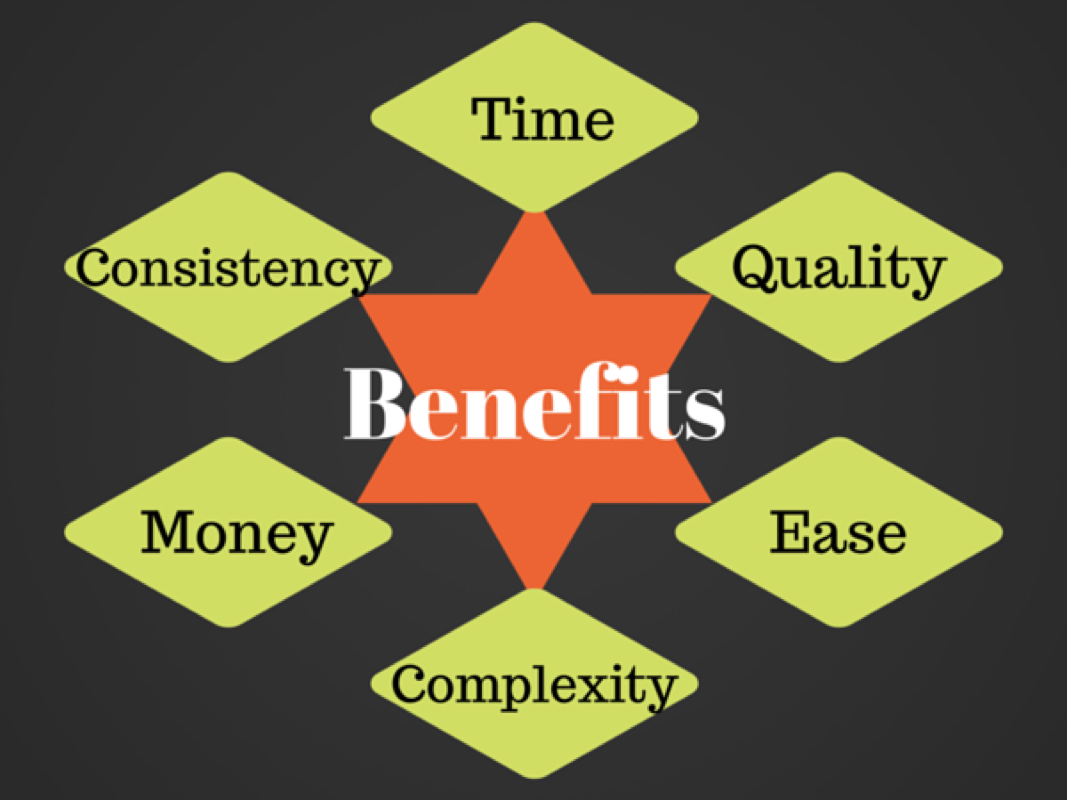|
If the problem is quality control headaches, the lack of consistency, excessive re-work, and an unprofitable practice, what's the solution? During the Total Quality Management (TQM) craze of the 90s, we studied what we could do to avoid several time-consuming traps that we repeatedly fell into. The result was a fairly rudimentary checklist of what needed to be done in each phase of a project. It helped a lot. So we congratulated ourselves on having mastered that TQM stuff, and moved on. Big mistake. We mistook what we could see of the iceberg as the whole problem. Now I know better, but - I'm retired. Here's what you should consider about the problem. What's The Solution? Standardized Project Management I think that simply stating the problem suggests the solution. You need standard procedures. Project Management boils down to a process, a group of procedures that could be shown as a flow chart, Gantt Chart or Pert Chart. These are good ways to figure out the process. Yes, I know. Every project is different. But there is nevertheless a broad sequence that always applies. For instance, you may have a concept for the roof, but you don't work out the roof plan until you have the floor plan under control. A standard procedure for project management is just a checklist that shows you the effective way to assemble the project to avoid omissions and re-work. Actually you need a bunch of checklists. Why Standardized Project Management Even though every project is different, the similarities are substantial. That's the part to standardize. By standardize, I mean do everything you normally do, but organize it to eliminate omissions and to be logical about the order in which you do each task. This is just being smart about designing. It's not about using the same design choices over and over. It's project management that we are standardizing, not design. Why Use Project Management Like This The reasons for using standardized project management is that you waste a lot of time flying by the seat of your pants. You also risk overlooking something. Overlooking something leads to awkwardness with either the contractor or client or both. Even if you catch the omission in time, you will be making revisions that hurt your productivity, profitability or, most likely, both. After all, the purpose of project management is to get the best result possible. Design Happens Within The Framework of Project Management Project management creates the framework within which you can do your best work. A good project management system should provide the time needed to do great design by eliminating the dead ends and wrong turns that put pressure on productive design time. Standardizing Project Management Doesn't Standardize Design By pursuing each design in roughly the same way that you have perfected over time the process for achieving good design is also perfected. There may not be anything the same from one design to the next except for the sequence in which you tackle the multitude of tasks and decisions that a design project requires. Project Management Should Help Your Design Touch All The Bases Part of the effectiveness that a project management system brings to design is completeness. By overlooking design issues there is a real risk that either the design will be diminished or you will have to backtrack later. Backtracking leads to wasted time or worse - compromise. What Standardized Project Management Is
What Standardized Project Management Isn't
Anyone Can Follow A Checklist The beauty of project management is that even the greenest rookie will produce a better project. This happens by guiding the newbie to think about the myriad of design issues in the same way that an experienced designer would. Sharing this process across the firm raises the common denominator. The firm as a whole produces better and more consistent results. As you refine your standard project management process, everyone gets better by taking advantage of what everyone has learned. Your Firm’s Reputation Rests On The Poorest Performing Member ’Figuring it out for yourself’ works for activities that are much simpler than designing a building. There isn't a prize for figuring it out for yourself. There is a cost. By not helping everyone do a better job, you are holding everyone back. The benefits of a standardized project management system are just too great to ignore. What are the benefits
So what are the benefits of a standard approach to project management? Managing Projects Is Easier When you have a tried and true sequence of tasks that you always undertake, then you also have the script for delegating those tasks. You can check what needs to be done and who should do it in a few minutes instead of feeling the need to take the measure of the project’s progress before you can decide on the next steps and assignments. Saves Time Studies show that design time is 20% documentation and 80% deciding what to document. All the opportunities for time savings lie with the 80%. Project management gives you those opportunities. Creates Consistency When you are following a standard process, consistency in the outcome of each project is virtually assured. Improves Quality From consistency, you also get improved quality primarily from having eliminated omissions and giving yourself the advantage of making decisions that build on one another. Tames Complexity Design projects have become much more complex in the past 30 years. The standard issues of building codes and zoning regulations and project delivery are all considerably more intricate. But the past 30 years have added new design issues as well - accessibility, security, digital communications, material choices, sustainability issues, energy modeling and management. Having a process for considering each issue at the proper times can help to tame this complexity. A standard process keeps it under control. Builds Value In Your Firm Achieving the benefits of managing easier, saving time, creating consistency, improving quality, and taming complexity has another consequence. Achieving these benefits is key to your firm becoming a more valuable business. Achieving these benefits has value in itself, but also builds value in your firm. These are the characteristics of a first class design firm. Firms that achieve these synergies see their reputation grow and their opportunity for profitability, too. Establishing a dependable way to deliver great results for your clients is a fundamental need for every firm. Comments are closed.
|
x
Archives
February 2024
Categories
All
|
Architekwiki | Architect's Resource | Greater Cincinnati
© 2012-2022 Architekwiki
© 2012-2022 Architekwiki










